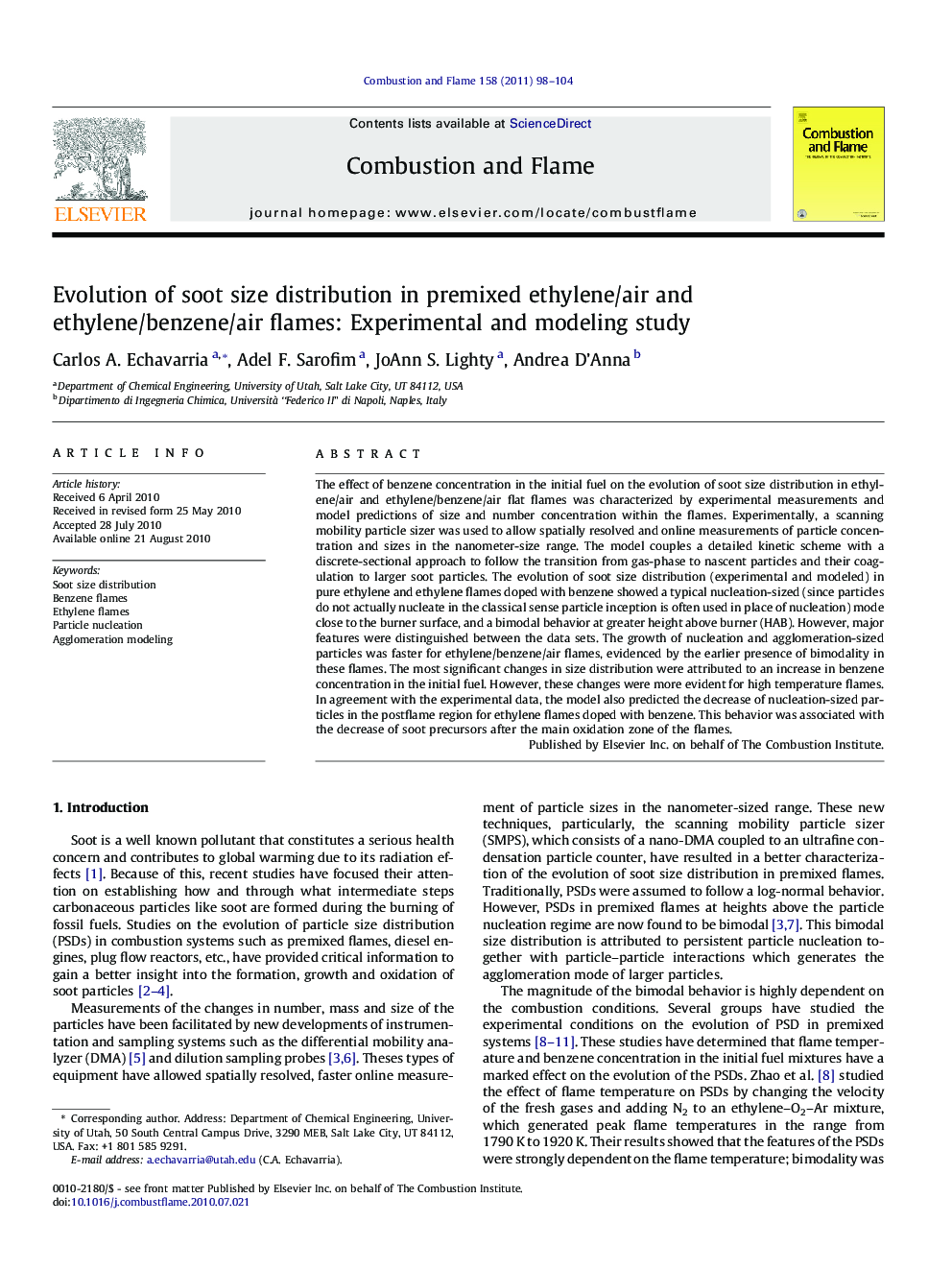| Article ID | Journal | Published Year | Pages | File Type |
|---|---|---|---|---|
| 169548 | Combustion and Flame | 2011 | 7 Pages |
The effect of benzene concentration in the initial fuel on the evolution of soot size distribution in ethylene/air and ethylene/benzene/air flat flames was characterized by experimental measurements and model predictions of size and number concentration within the flames. Experimentally, a scanning mobility particle sizer was used to allow spatially resolved and online measurements of particle concentration and sizes in the nanometer-size range. The model couples a detailed kinetic scheme with a discrete-sectional approach to follow the transition from gas-phase to nascent particles and their coagulation to larger soot particles. The evolution of soot size distribution (experimental and modeled) in pure ethylene and ethylene flames doped with benzene showed a typical nucleation-sized (since particles do not actually nucleate in the classical sense particle inception is often used in place of nucleation) mode close to the burner surface, and a bimodal behavior at greater height above burner (HAB). However, major features were distinguished between the data sets. The growth of nucleation and agglomeration-sized particles was faster for ethylene/benzene/air flames, evidenced by the earlier presence of bimodality in these flames. The most significant changes in size distribution were attributed to an increase in benzene concentration in the initial fuel. However, these changes were more evident for high temperature flames. In agreement with the experimental data, the model also predicted the decrease of nucleation-sized particles in the postflame region for ethylene flames doped with benzene. This behavior was associated with the decrease of soot precursors after the main oxidation zone of the flames.
